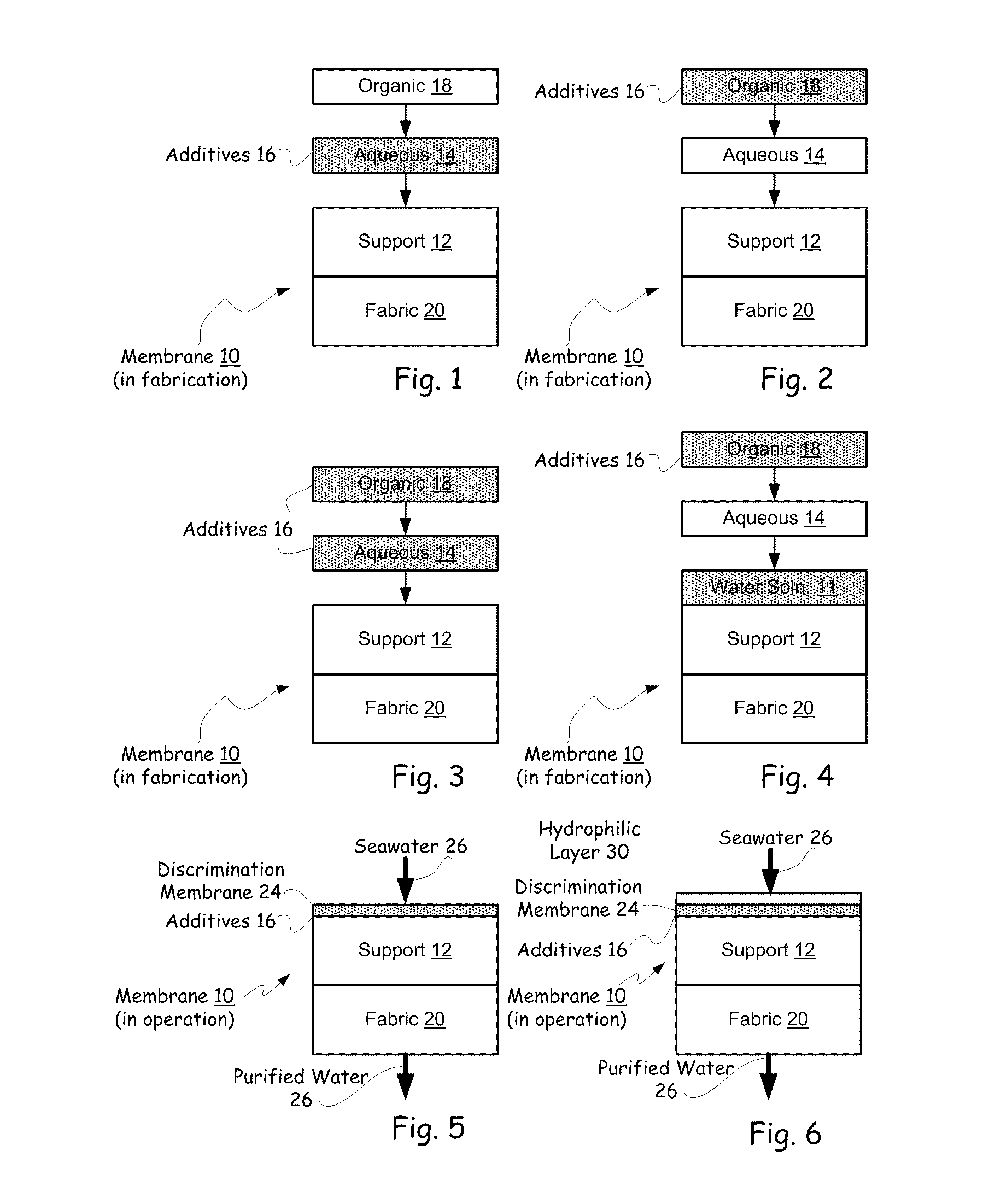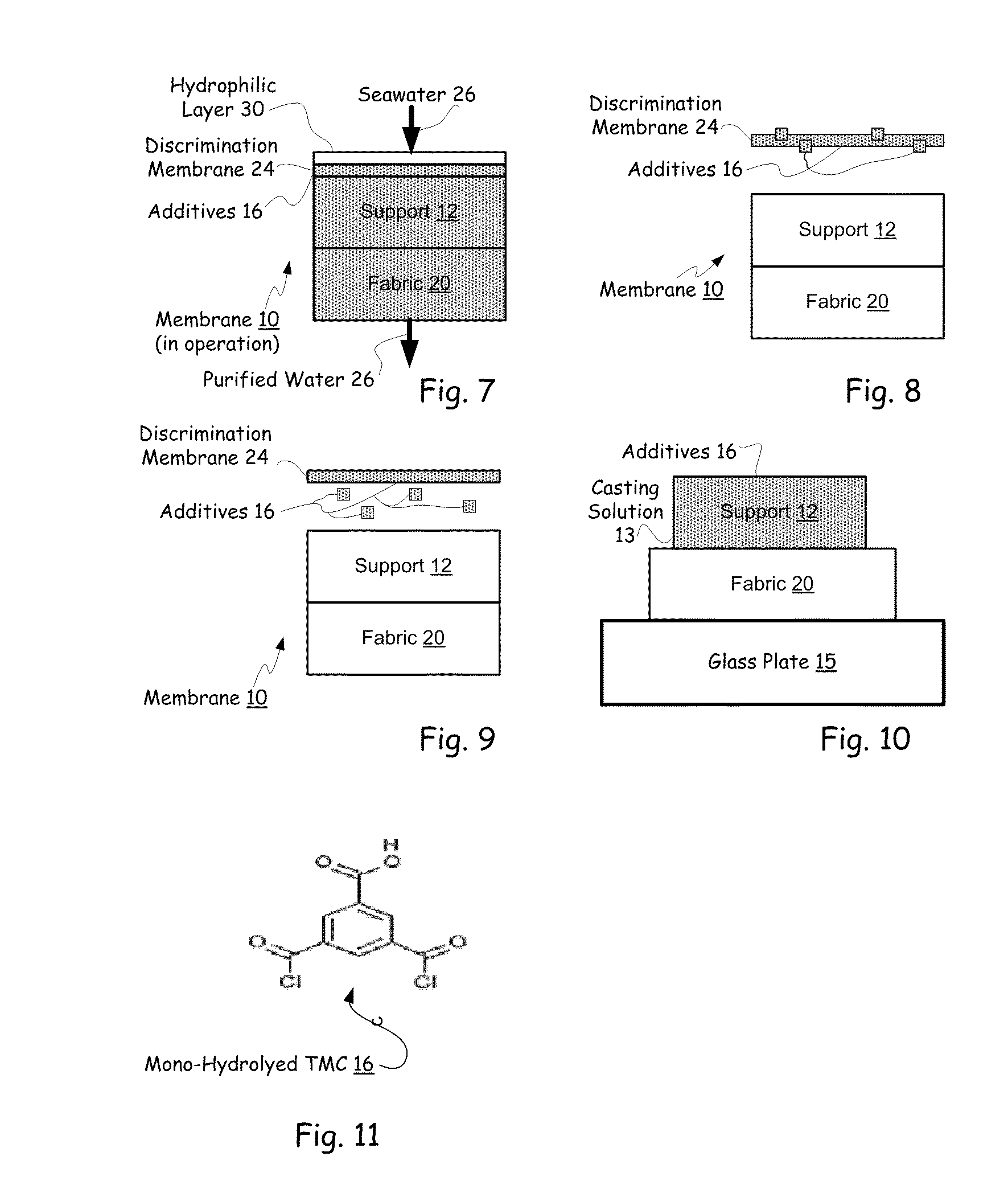Hybrid tfc ro membranes with nitrogen additives
a technology of nitrogen additives and tfc membranes, which is applied in the field of hybrid tfc ro membranes with nitrogen additives, can solve the problems of reduced flux, limited success, and inability to operate well of tfc membranes suitable for brackish water use, i.e., at low pressure and salt load, and achieves the effect of increasing flux, anti-fouling characteristics, and reducing the number o
- Summary
- Abstract
- Description
- Claims
- Application Information
AI Technical Summary
Benefits of technology
Problems solved by technology
Method used
Image
Examples
example 185
[0358 illustrates one of the benefits of a hybrid TFC membrane approach in which nanoparticles, such as LTA are combined with molecular additives, such as Ga(acac)3, to form an improved hybrid TFC membrane with qualities superior than are provided by either additive separately. In particular, the hybrid LTA Ga membrane provided 31.9 GFD flux, an improvement of about 41% more than the control with only slight loss in salt rejection. The further increase in flux is on the order of an addition 14% when compared to the 36% flux increase of the Ga(acac)3 additive. Perhaps even more importantly, the flux rate after the 47 hour test was 27.3 GFD, i.e. the flux loss was only 17% after the 47 hour test. As a result, the hybrid TFC membrane has substantially the flux improvement of its soluble additive, in this case the Ga(acac)3, and the fouling resistance of the LTA nanoparticles.
Section E: Advantages
[0359]Hybrid membranes, that is, membranes with nanoparticles, and additives such as solubl...
PUM
| Property | Measurement | Unit |
|---|---|---|
| Fraction | aaaaa | aaaaa |
| Fraction | aaaaa | aaaaa |
| Fraction | aaaaa | aaaaa |
Abstract
Description
Claims
Application Information
 Login to View More
Login to View More - R&D
- Intellectual Property
- Life Sciences
- Materials
- Tech Scout
- Unparalleled Data Quality
- Higher Quality Content
- 60% Fewer Hallucinations
Browse by: Latest US Patents, China's latest patents, Technical Efficacy Thesaurus, Application Domain, Technology Topic, Popular Technical Reports.
© 2025 PatSnap. All rights reserved.Legal|Privacy policy|Modern Slavery Act Transparency Statement|Sitemap|About US| Contact US: help@patsnap.com



